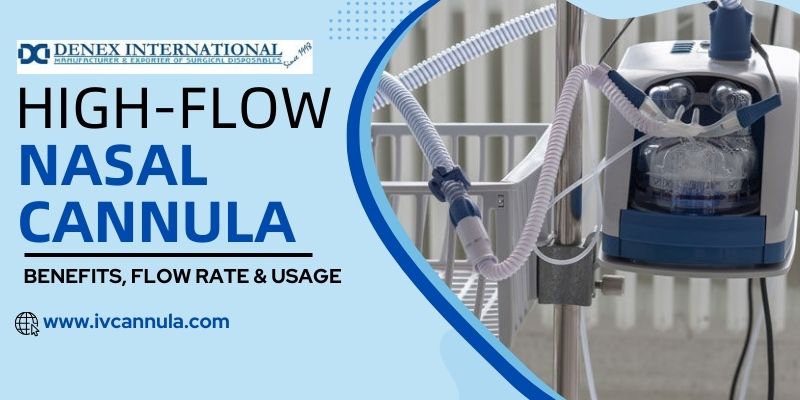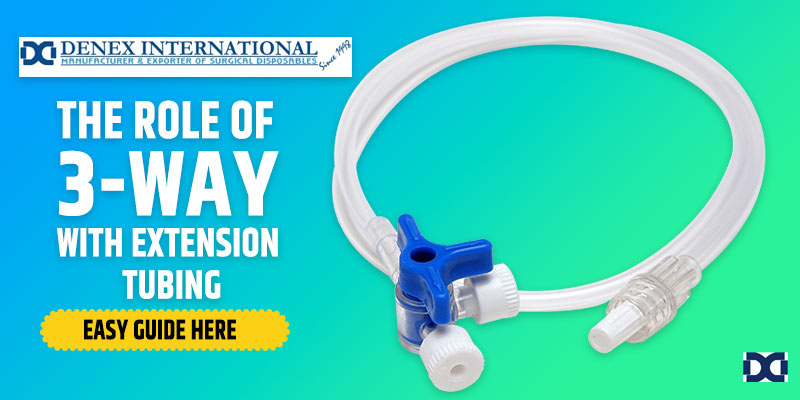In the intricate world of medical procedures, precision is paramount. Regarding blood transfusions, selecting the appropriate IV cannula size is a crucial decision that can significantly impact patient care. Denex International, a leading IV cannula manufacturer, recognizes the importance of this choice and aims to shed light on the factors influencing the selection of Right IV Cannula Size for Blood Transfusion.
Understanding IV Cannula
An intravenous (IV) cannula is a medical device that delivers fluids, medications, or blood directly into a patient’s bloodstream. It consists of a thin, flexible tube (cannula) attached to a needle, allowing insertion into a vein. IV cannulas come in various types, including over-the-needle, through-the-needle, butterfly needle, and safety cannula. They also vary in size, measured by gauge, with larger gauges indicating smaller needle diameters. The choice of IV cannula type and size depends on factors such as the patient’s condition, the purpose of infusion, and the medical procedure’s requirements.
Types of IV Cannulas:
In the realm of intravenous (IV) therapy, the choice of cannula plays a crucial role in ensuring effective and safe administration of fluids and medications. IV cannulas come in various types, each designed to meet specific clinical needs. In this comprehensive guide, we will delve into three primary categories of IV cannulas: Peripheral, Central Line, and Mid-line.
Peripheral IV Cannula: Peripheral IV cannulas are among the most commonly used devices for administering fluids and medications. They are inserted into peripheral veins, typically in the arms or hands. These cannulas are characterized by their ease of insertion, making them suitable for short-term treatments. Peripheral IV lines are available in various sizes, with smaller gauges for delicate veins and larger gauges for rapid fluid administration.
Key Features:
- Inserted into peripheral
- veins Suitable for short-term treatments
- Available in various sizes
Central Line IV Cannula: Central line IV cannulas are specialized devices designed for more complex medical situations, requiring long-term or continuous access to larger veins. These cannulas are inserted into major veins near the heart, such as the subclavian or jugular veins. Central lines are beneficial for delivering medications, nutrition, and fluids directly into the central circulation and are commonly used in critical care settings.
Key Features:
- Inserted into major veins near the heart
- Ideal for long-term or continuous access
- Commonly used in critical care settings
Mid-line Cannulas: Mid-line cannulas occupy a middle ground between peripheral and central line cannulas. These devices are inserted into the upper arm and extend to a point just above or below the axilla (armpit). Mid-line cannulas are suitable for patients who require medium-term intravenous therapy but do not need the invasiveness of a central line. They provide a balance between ease of insertion and the ability to administer a broader range of medications.
Key Features:
- Inserted into the upper arm
- Extends to a point just above or below the axilla
- Ideal for medium-term intravenous therapy
Choosing the Right IV Cannula Size for Blood Transfusion
IV cannulas, or intravenous catheters, come in various sizes denoted by different gauge numbers. The gauge number refers to the diameter of the needle, with smaller numbers indicating larger diameters. Healthcare professionals typically consider sizes ranging from 16 to 18 gauges for blood transfusions.
Intravenous (IV) cannulas are essential medical devices administer fluids, medications, or blood products directly into a patient’s bloodstream. These devices come in various types and sizes to cater to different medical needs. Here’s an overview of the types and sizes of IV cannulas:
Sizes of IV Cannulas:
IV cannulas are classified by their gauge size, which represents the diameter of the needle or catheter. The gauge is inversely related to the size, meaning more significant gauge numbers correspond to smaller needle diameters.
| Size | Diameter | Uses |
| 18 Gauge | 1.27 mm | Common for general IV use, suitable for most fluids and medications. |
| 20 Gauge | 0.91 mm | Used for patients with more minor or fragile veins, suitable for essential infusions. |
| 22 Gauge | 0.71 mm | Ideal for pediatric patients and those with delicate or easily collapsible veins. |
| 24 Gauge | 0.55 mm | Reserved for situations requiring minimal flow, such as neonatal care or administering specific medications. |
| 26 Gauge | 0.45 mm | Tiny and fine, used for delicate procedures or situations requiring minimal invasion. |
Choosing the appropriate type and size of IV cannula depends on factors such as the patient’s condition, the infusion’s purpose, and the medical procedure’s specific requirements. Healthcare professionals carefully assess these factors to ensure IV cannulas’ safe and effective use in various clinical settings.
Factors Influencing IV Cannula Size Selection:
Blood Flow Rate: Larger gauge sizes allow for a faster flow rate. When administering blood transfusions, a larger IV cannula size (16 or 18 gauge) is often preferred to efficiently accommodate the volume of blood being transfused.
Patient Vein Condition: The condition of the patient’s veins plays a pivotal role in size selection. Fragile or small veins may benefit from a smaller gauge size (20 gauge) to minimize trauma and discomfort.
Transfusion Compatibility: Certain blood products, such as packed red blood cells, may have specific requirements for infusion. Healthcare providers should consider the compatibility of the IV cannula size with the blood component being administered.
Patient Comfort: Balancing the need for an efficient transfusion with patient comfort is essential. Smaller gauge sizes may cause less discomfort during insertion, but larger sizes might be necessary for rapid transfusions.
Denex’s Commitment to Quality:
Denex International, as a trusted IV cannula manufacturer, emphasizes the importance of producing high-quality products that meet medical standards. Our range of IV cannulas is designed to provide healthcare professionals with reliable tools to deliver optimal patient care during blood transfusions.
Conclusion:
Selecting the right IV cannula size for blood transfusion requires a thoughtful evaluation of various factors, including blood flow rate, patient vein condition, transfusion compatibility, and patient comfort. Denex International is a reliable partner in this critical decision, offering a range of IV cannulas crafted with precision and quality to enhance the overall transfusion experience.
For more information on our IV cannula products and their applications, visit Denex International. Trust Denex for precision; trust Denex for care.






